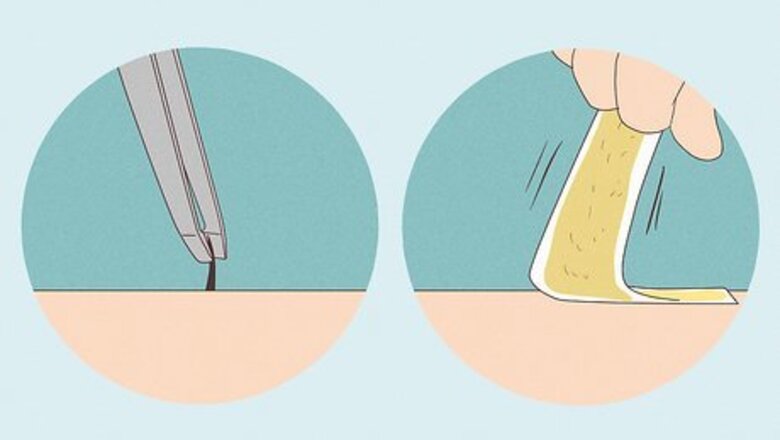
views
- Dark spots after shaving may be hair follicles peeking out from under the surface of your skin, clogged pores, hyperpigmentation, or scars from ingrown hairs.
- It may help to pluck or wax leftover hairs, exfoliate your skin, or use over-the-counter products like vitamin C serum to fade dark spots.
- Consider seeing a dermatologist, who may recommend chemical peels, prescription creams, laser hair removal, or electrolysis.
Over-the-Counter & Home Remedies

Try waxing or plucking to get rid of hairs left behind after shaving. Shaving cuts the hair off at the surface of your skin, rather than pulling the hair and follicle out completely. Dark spots after shaving can be caused by these freshly shaved hair follicles peeking out from just under your skin. Consider waxing or plucking the affected area to remove dark follicles.
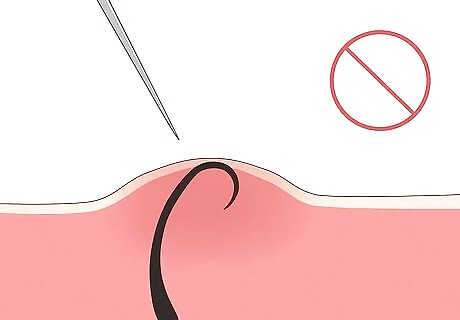
Treat ingrown hairs and prevent scarring from them. After shaving, a strand of hair that’s starting to grow back can curve downward and grow back into the skin. These raised discolored spots are called ingrown hairs, and they can also lead to scars and hyperpigmentation. Treat ingrown hairs as soon as they appear to create a smooth, spot-free surface and prevent scarring. Apply warm compresses to open up the pore and encourage the ingrown hairs to release. Leave the warm compress on the area for 10-15 minutes at a time. Exfoliate the skin gently with a wet wash cloth and warm water. Gently rub the area with circular motions to release the hair. If the looped hair is visible on the surface of your skin, you can gently pull it out with sterilized tweezers. Apply rubbing alcohol to the area first to prevent infection. Your doctor may also prescribe antibiotic ointment or pills to prevent infection if your ingrown hair is severe. Don’t pick, scratch, or pop ingrown hairs, as this can lead to scarring.
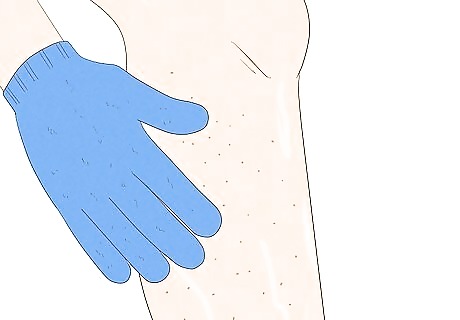
Exfoliate skin to get rid of clogged pores. If you’re noticing a lot of small, dark spots on your legs after shaving, you might be dealing with “strawberry legs.” This occurs when the pores on your legs get clogged with dirt, oil, or dead skin after shaving. “Strawberry legs” isn’t an official medical diagnosis, and it’s completely harmless, but some people prefer to get rid of the tiny spots for cosmetic reasons. Exfoliating removes dead skin cells and prevents your pores from clogging, which can reduce the appearance of strawberry legs. Wet a loofah, wash cloth, or exfoliating glove with warm water and a gentle soap. Rub your skin in gentle, circular motions, and be sure to moisturize afterwards. Over-the-counter creams or lotions containing chemical exfoliants like salicylic acid may also help.
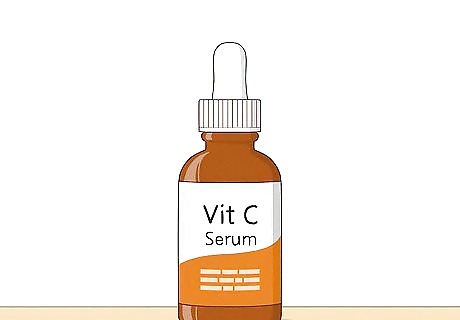
Use a vitamin C serum to fade hyperpigmentation spots. An over-the-counter vitamin C serum can help lighten dark spots from hyperpigmentation. First, wash your skin, then rub a small amount of the serum in before putting on sunscreen.

Try a licorice root extract to lighten dark areas. Licorice root can help address dark spots from hyperpigmentation as well. Look for a ready-made licorice root extract skin salve that contains liquiritin. Apply a topical cream (1 gram per day) every day for a month to lighten dark spots. It’s best to check with your doctor before trying licorice root and other herbal extracts, especially if you have existing health conditions, such as diabetes. You should avoid using licorice root if you’re pregnant or plan on getting pregnant.
Treating Dark Spots with Dermatology

Get a referral to a dermatologist from your primary doctor. If your dark spots persist for several months and home solutions are ineffective, consider seeking a medical solution. Call your primary care doctor and ask them to recommend a dermatologist. You can also find a dermatologist by using the search tool on the website of the American Academy of Dermatology: https://find-a-derm.aad.org/ Call your insurance provider to make sure any dermatological care you’ll need is covered. Ask them if specialist care needs prior approval and if they can provide you with in-network care providers.
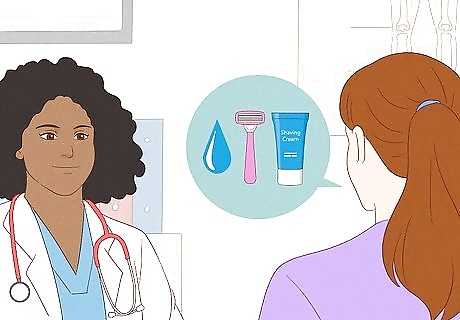
Discuss your skincare routines with your dermatologist. Tell your dermatologist about your shaving practices, skincare routine, and any products you use. That way, they can help you figure out the best treatment plan. A dermatologist can also help rule out other medical causes. Hyperpigmentation, for example, can result from hormonal changes, thyroid problems, or vitamin deficiencies. You should also be prepared to discuss your diet, sun exposure and sunscreen use, and any over the counter products you’ve used. If your job requires you to be clean-shaven in the workplace, but you suffer from severe razor bumps, consider asking your employer whether your dermatologist can sign a waiver that will exempt you from having to shave every day.
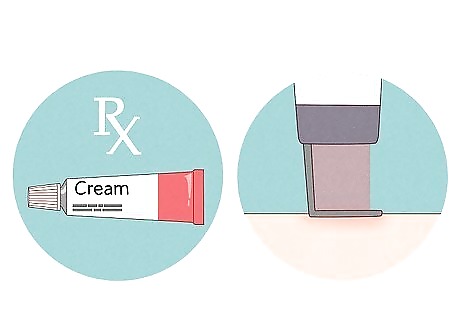
Ask your dermatologist about treatment options. Your dermatologist may prescribe a cream or suggest a skin treatment that uses lasers or light therapy. Your dermatologist might also recommend a chemical peel, but you'll likely want to schedule this when you're able to stay home for 2-3 days, as you'll experience peeling and flaking of your skin after the procedure. Your dermatologist may also recommend a prescription-strength retinoid like Tretinoin to exfoliate and resurface skin, which can reduce the appearance of hyperpigmentation spots.
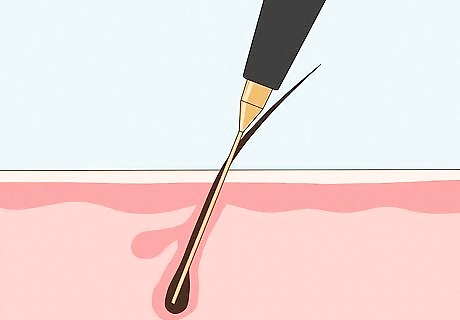
Consider permanent hair removal. If you’re prone to ingrown hairs, hyperpigmentation, strawberry legs, or other complications from shaving or waxing, your doctor may recommend permanent hair removal options, such as electrolysis or laser hair removal. These options would eliminate the need for shaving in the future, so you wouldn’t have to deal with pesky dark spots anymore.
Preventing Dark Spots From Shaving
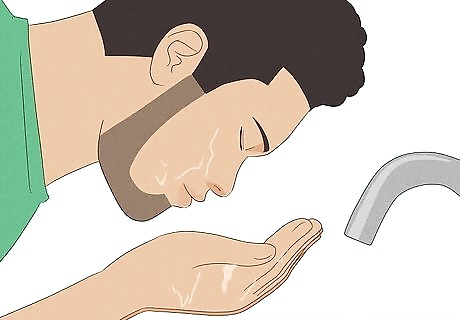
Wet your skin before shaving and use a shaving cream or gel. Don't shave dry skin! Water softens your skin and hair, which makes shaving easier, and shaving cream helps your razor glide along your skin more smoothly. This prevents irritation and ingrown hairs. Pick a shaving cream or gel that's targeted for sensitive skin if you’re especially prone to irritation.

Use a sharp razor. Avoid shaving with dull blades, as this can increase the chances of skin irritation and ingrown hairs. Swap out disposable razors or change the blade after using your razor 5-7 times. Store your razor outside of the shower or tub so it dries completely.

Shave gently in the direction of hair growth. No matter where you’re shaving, always go in the direction that your hair grows. Shaving against the grain pulls at the hair, which can cause ingrown hair and razor burn or bumps. Rinse the razor with hot water after every stroke to prevent too much hair from collecting between the blades. Once you're done shaving, gently pat your skin dry. Then apply a moisturizing, unscented lotion to the area to prevent irritation and help your skin barrier heal.
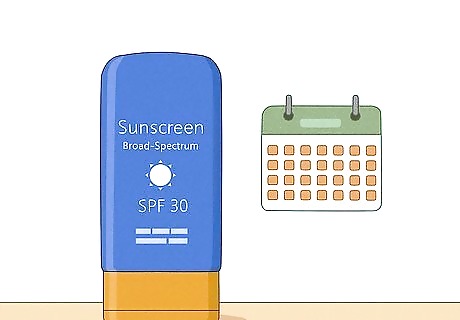
Apply sunscreen every day. Unprotected exposure to sunlight can worsen dark spots and hyperpigmentation. Be sure to apply a broad-spectrum sunscreen before going outside. Choose a sunscreen with a sun protection factor (SPF) of 30 or higher.




















Comments
0 comment